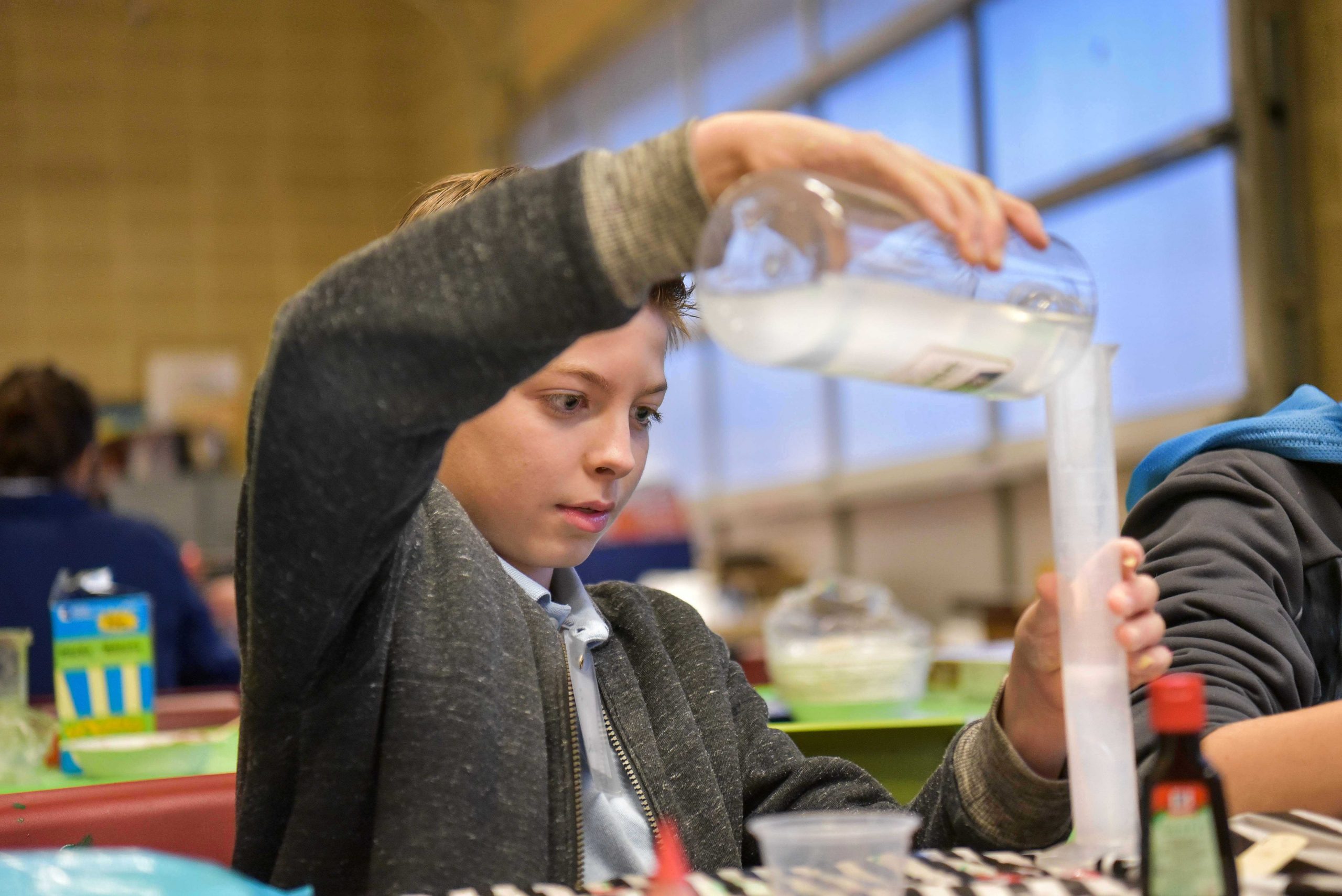ALBUQUERQUE, N.M. — Many of us can thank a teacher or mentor who early in our lives ignited a passion in us for our current professions. For nearly 30 years, Sandia National Laboratories’ Manos — or “hands-on” — program has provided that spark for science, technology, engineering and math, or STEM, fields in thousands of Albuquerque middle school students.

Tactile experiences in engineering, physics, computing, chemistry, robotics, electronics and more have guided Sandia’s Hispanic Outreach for Leadership and Awareness in engaging Albuquerque’s under-represented students. Each year, about 70 Sandia employees volunteer as teachers and managers for the program.
Some were Manos students themselves.
“I took a different module in each of my middle school years, and they all were great,” says Sandia mechanical engineer Melissa Benavidez, who hooked into Manos 20 years ago as a student at John Adams Middle School. “Every experience taught me even then that I could make a career with math and science that I enjoyed.”
Benavidez maximized her Manos experience, becoming a Sandia intern in high school and college. Now, she is a Sandia employee and Manos volunteer.
Manos has engaged more than 5,000 young students in Albuquerque with gripping hands-on experiences hoping to increase the pool of Hispanic kids who pursue STEM degrees. Since its beginning in 1991, Manos has targeted middle schools that feed into Albuquerque Public Schools, high schools with lower graduation rates, and provides transportation to the sessions to students in those school districts. Now, Manos is open to all middle school students in the Albuquerque area.
Aaron Legarda,12, heard about Manos from his teachers. The South Valley Preparatory School seventh grader has completed modules in chemistry and math, and now is exploring robotics. “In the second week, we made teams and started putting together robots with touch sensors and light sensors and color sensors,” he says. “It’s really cool to make something from parts that moves and counts and measures. We’re measuring how many times it touches things and how long it goes without stopping.”
Sandia employee Carla Moncayo Jordan, who volunteered with the program as a teacher and coordinator for the last 10 years, says, “Making a difference in a child’s life quickly becomes a mission for our volunteers. We really want to inspire these kids and show them there’s a future right here in Albuquerque for making a great life for themselves, so we design our courses around real-life, relatable ideas.”
Jordan teaches a “Fun with Math and Money” course and uses the opportunity to have students dig deep to consider career choices. “The kids pick a career, or a couple of careers, and we run the numbers,” she explains. “They learn firsthand what it takes in time and money to get to a specific career level and what the potential payoffs are.
“That usually gets them talking about buying a house, traveling, hobbies and other interests they understand can be in reach with a plan,” she adds. “We also have our students create a stock portfolio and track it during the module. It’s a great way to use real-life applications to explore mathematical concepts.”
All classes use science games to help students answer intriguing questions. “I like the way they relate chemistry subjects to everyday life, like how we use polymers in so many different things — from clothes to glue,” says Ethan Snow, 13, an eighth grader at Jefferson Middle School. A polymer is a chemical compound of small molecules arranged in a simple repeating structure to form a larger molecule.
“I really like chemistry and now I’m going to study it in high school.” Ethan also appreciates other Manos benefits. “I mean, we get to make liquid nitrogen ice cream twice — there are good perks to this course.”
Manos has about 20 sixth to eighth graders per class. Classes are taught at the National Hispanic Cultural Center and run anywhere from two to seven weeks, depending on the subject. It’s all free to the students.
Jordan says the hands-on application is important so that the students are excited about the projects and want to return.
“We proudly enjoy a regular flow of kids returning for more courses over the three years they’re eligible,” Jordan says. “Thousands of kids have been through the program, and we’ve seen a steady increase in APS high school graduation rates over the years. We can’t take credit for that, but we know we’re having an impact.
“We’re not just teaching kids about science and technology — we’re teaching them about life and how to build a career and a future,” she adds. “They get that — it means something to them.”
What: Among other activities, engineering students will don waterproof coats, set off sprinklers and operate fire extinguishers for Fire Science Day.
When: 4 p.m. Thursday, May 2.
Where: National Hispanic Cultural Center, 1701 4th St. SW.
RSVP: Contact Luke Frank at 505-844-2020 or lcfrank@sandia.gov by 3 p.m. Wednesday, May 1, to attend.
